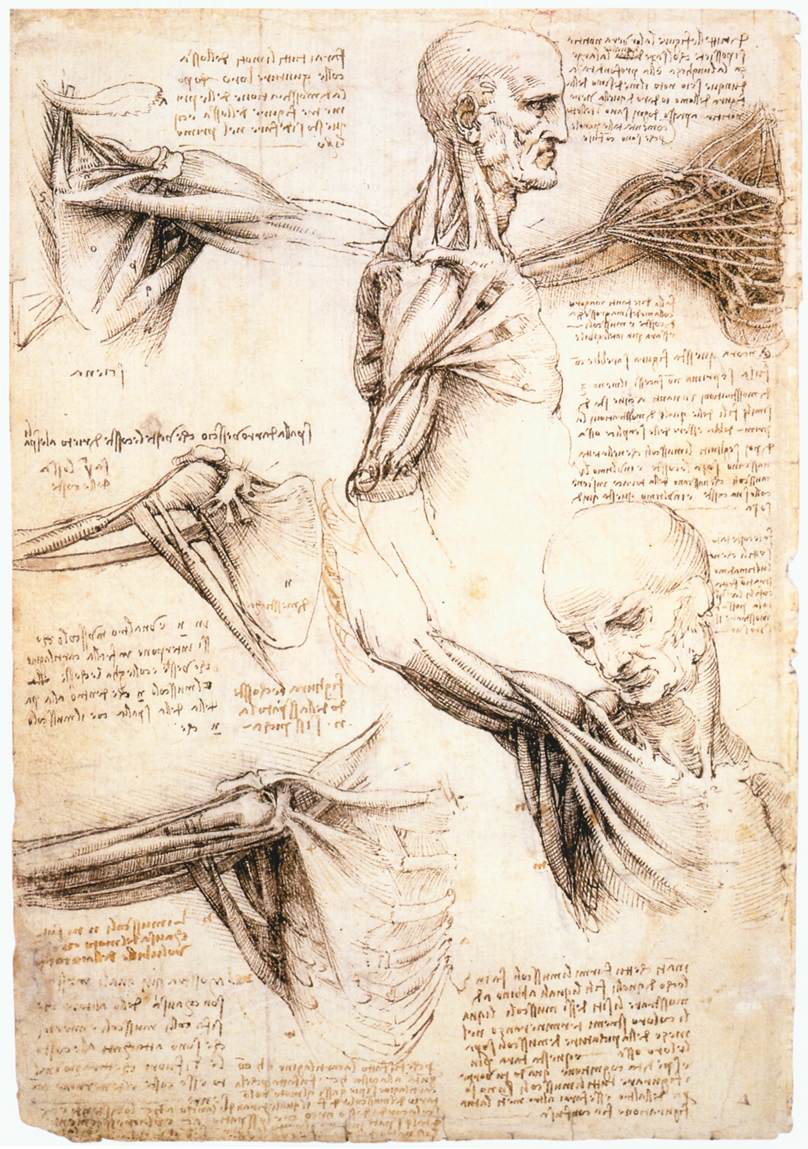Artists to Know: Leonardo Da Vinci
Leonardo Da Vinci (April 15, 1452 – May 2, 1519) was an Italian polymath: painter, sculptor, architect, musician, scientist, mathematician, engineer, inventor, anatomist, geologist, cartographer, botanist and writer. Leonardo has often been described as the archetype of the Renaissance Man, a man of "unquenchable curiosity" and "feverishly inventive imagination". He is widely considered to be one of the greatest painters of all time and perhaps the most diversely talented person ever to have lived.
Leonardo drew many studies of the human skeleton and its parts, as well as muscles and sinews. He studied the mechanical functions of the skeleton and the muscular forces that are applied to it in a manner that prefigured the modern science of biomechanics. He drew the heart and vascular system, the sex organs and other internal organs, making one of the first scientific drawings of a fetus in utero. As an artist, Leonardo closely observed and recorded the effects of age and of human emotion on the physiology, studying in particular the effects of rage. He also drew many figures who had significant facial deformities or signs of illness. Leonardo also studied and drew the anatomy of many other animals as well, dissecting cows, birds, monkeys, bears, and frogs, and comparing in his drawings their anatomical structure with that of humans. He also made a number of studies of horses.
As a successful artist, he was given permission to dissect human corpses at the Hospital of Santa Maria Nuova in Florence and later at hospitals in Milan and Rome. Leonardo made over 200 pages of drawings and many pages of notes towards a treatise on anatomy. They were examined by a number of anatomists and artists, including Vasari, Cellini and Albrecht Durer who made a number of drawings from them.
The famous art historian Bernard Berenson wrote in 1896: "Leonardo is the one artist of whom it may be said with perfect literalness: Nothing that he touched but turned into a thing of eternal beauty. Whether it be the cross section of a skull, the structure of a weed, or a study of muscles, he, with his feeling for line and for light and shade, forever transmuted it into life-communicating values."



